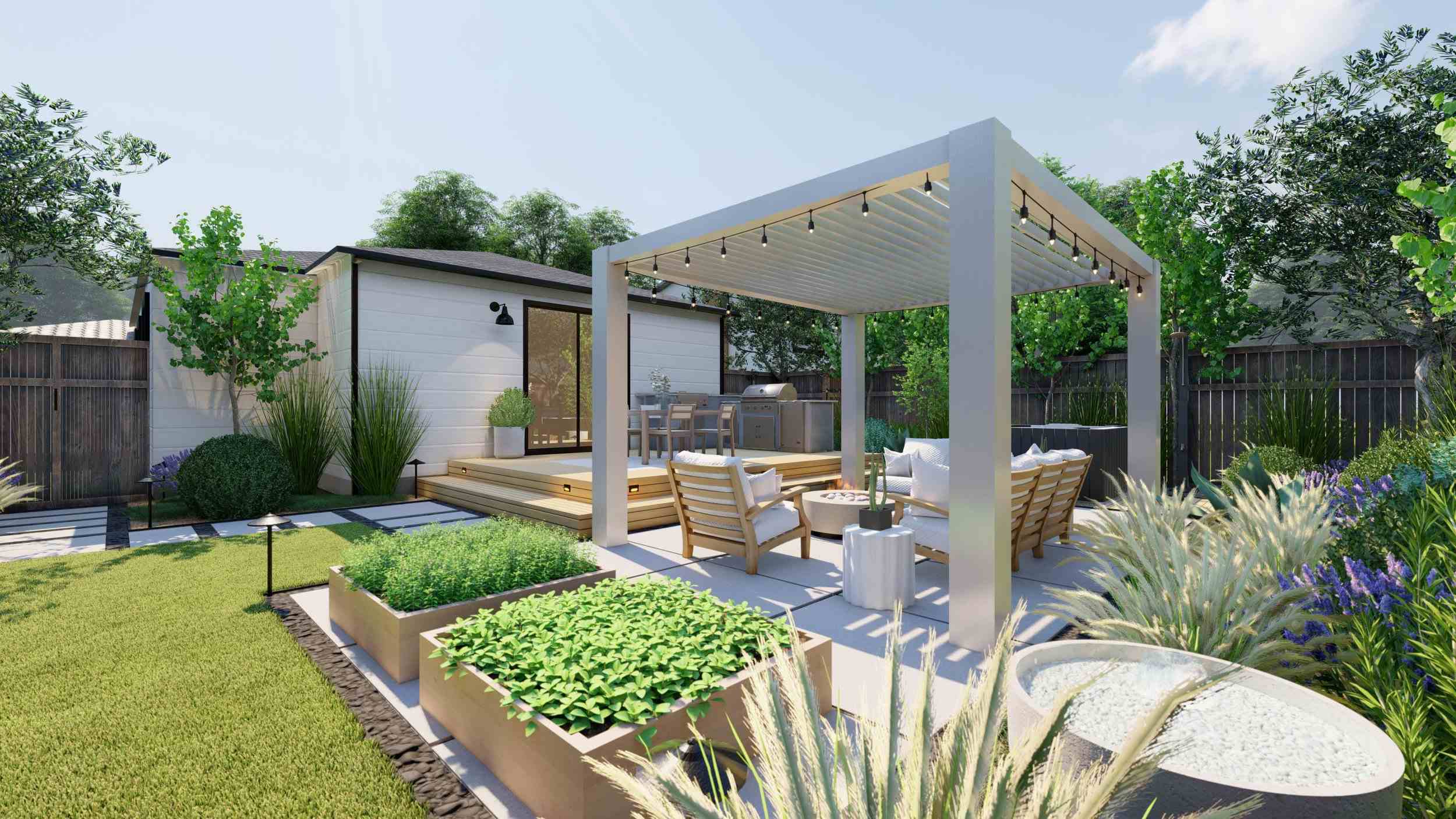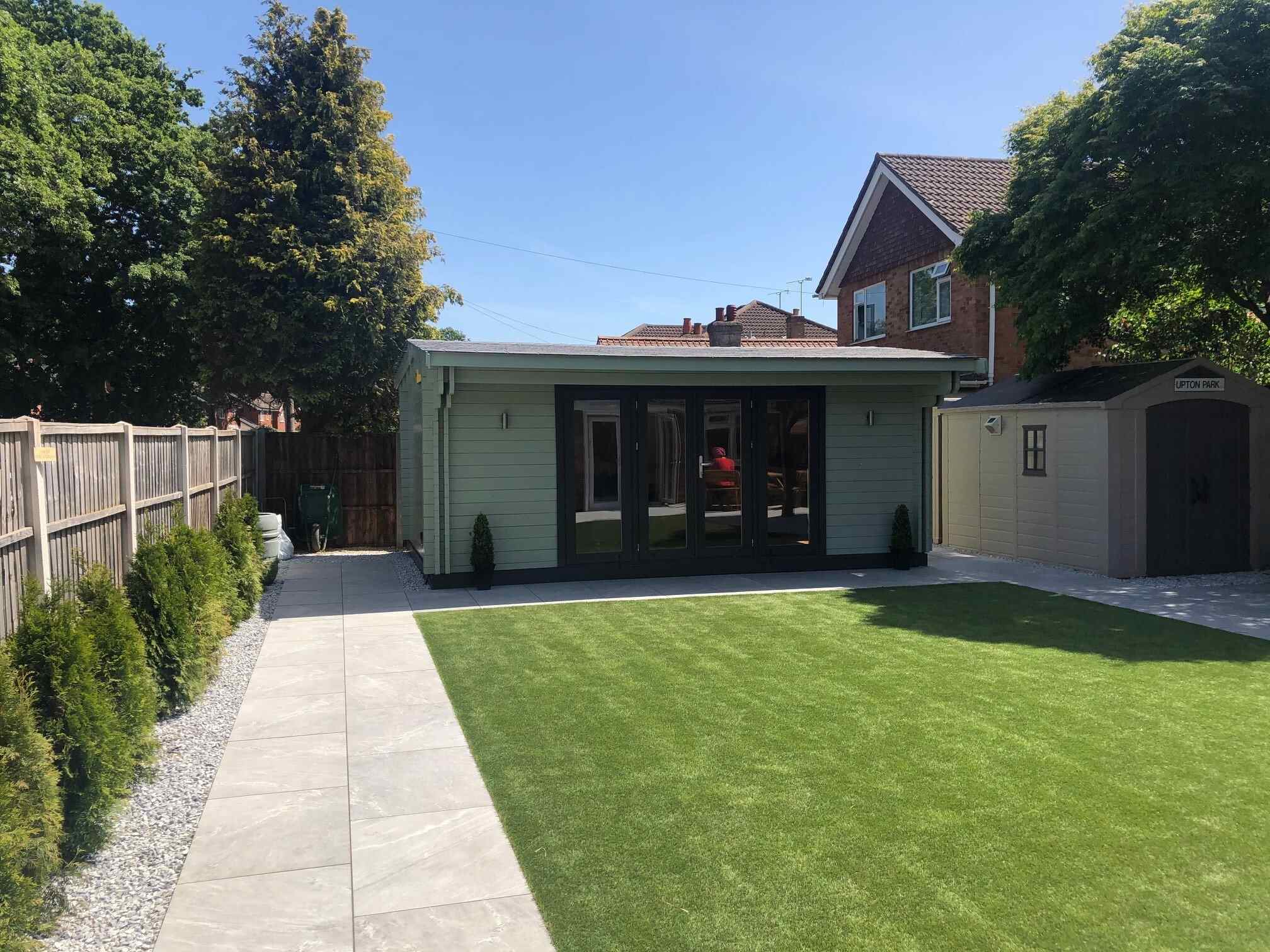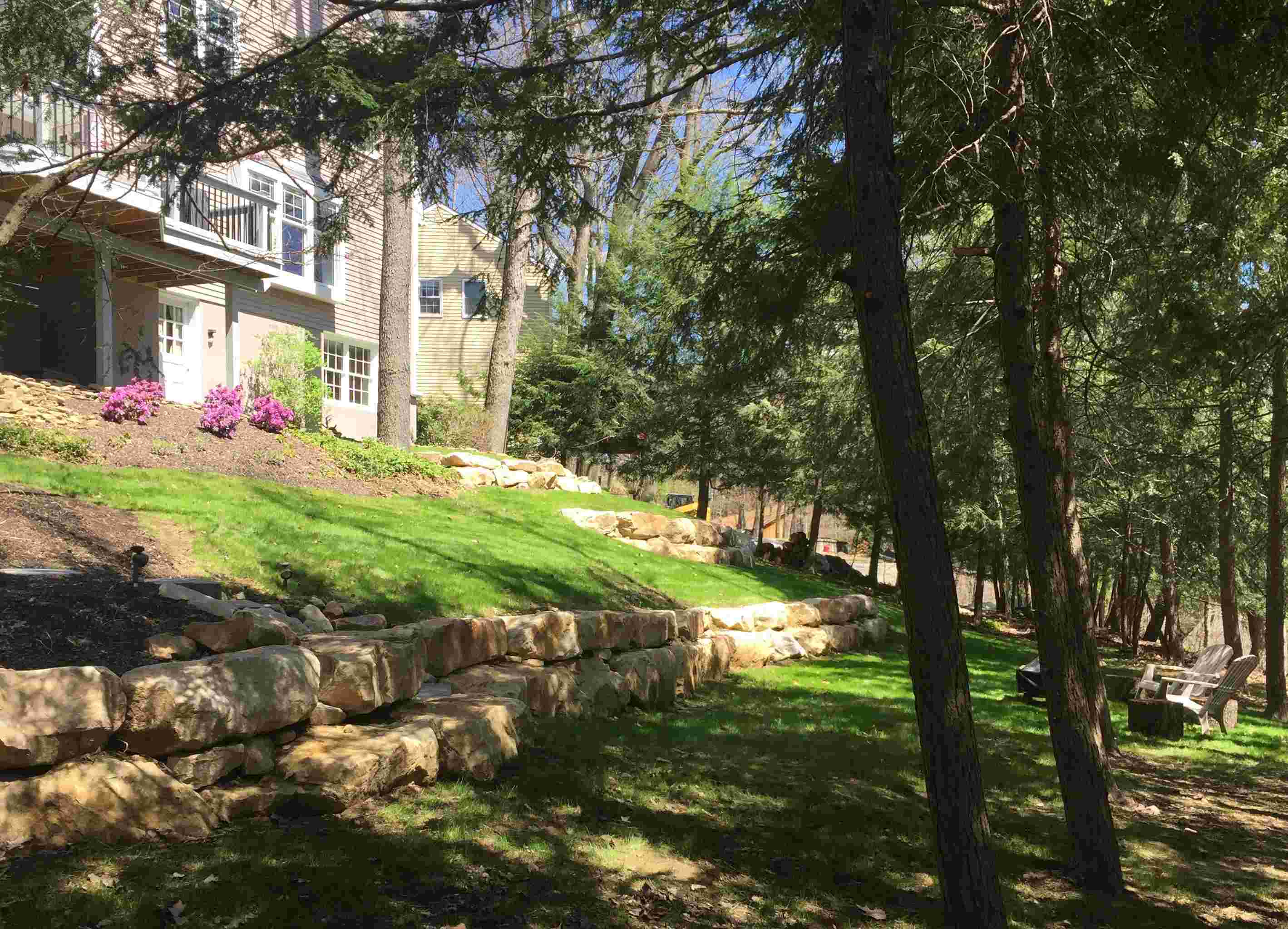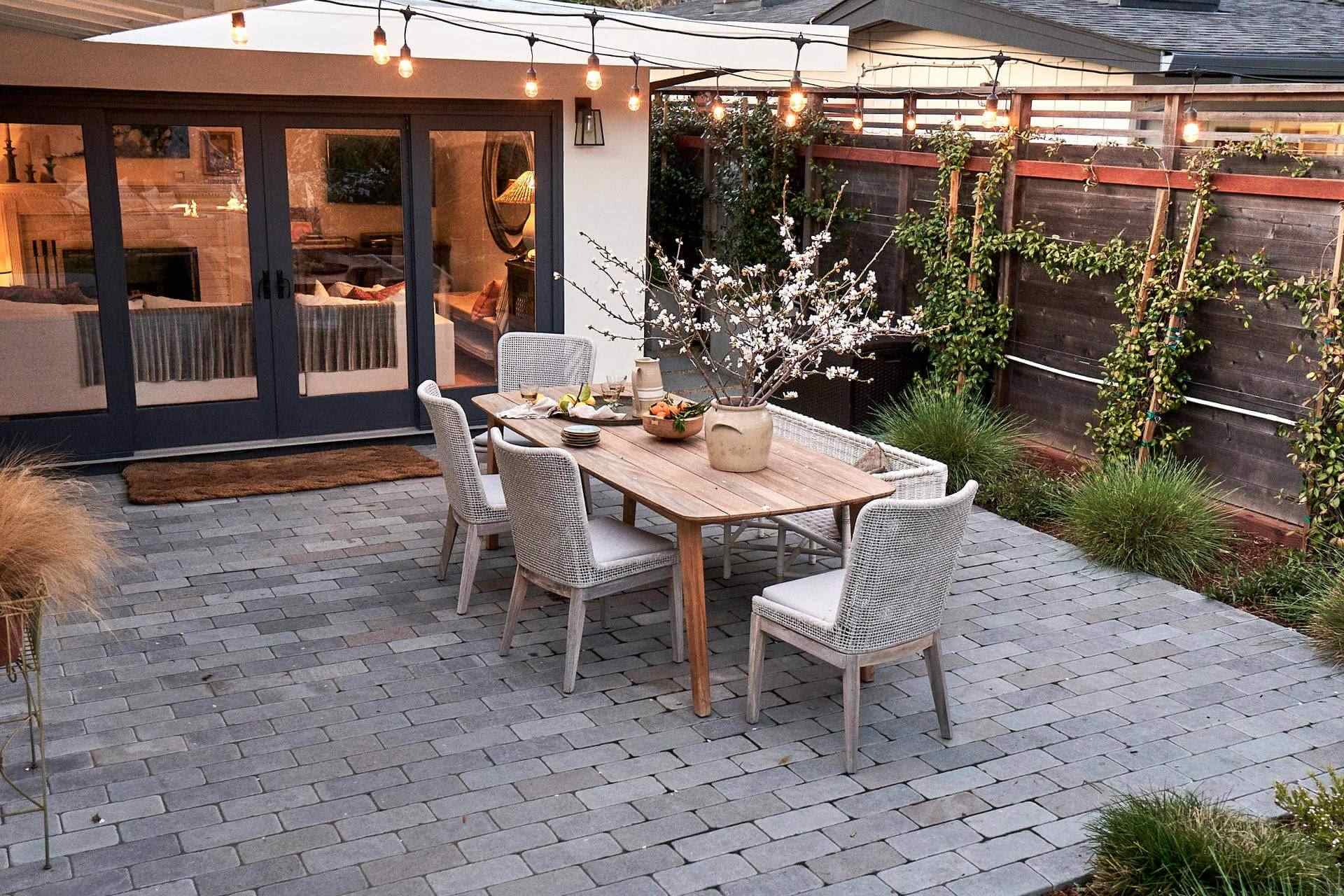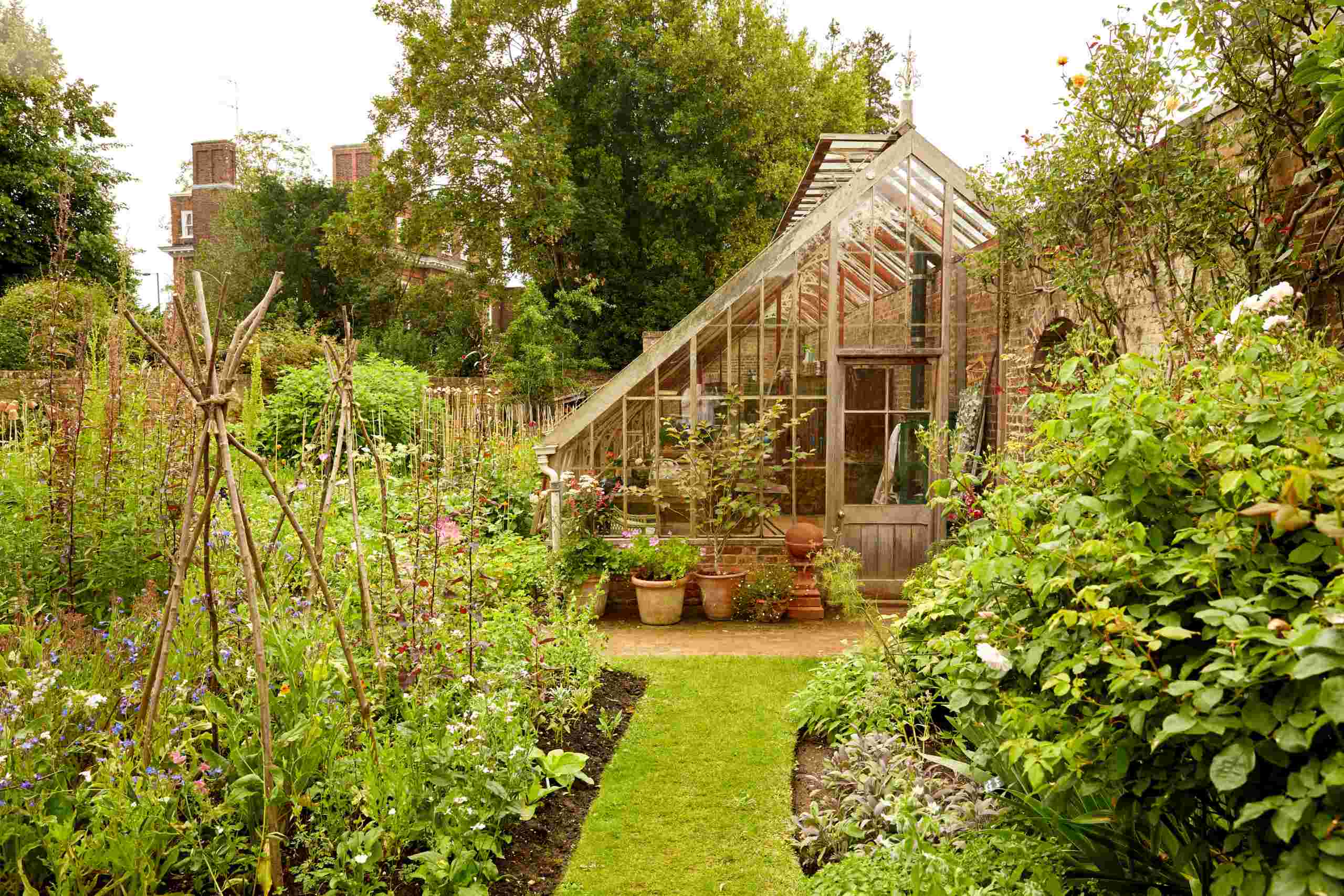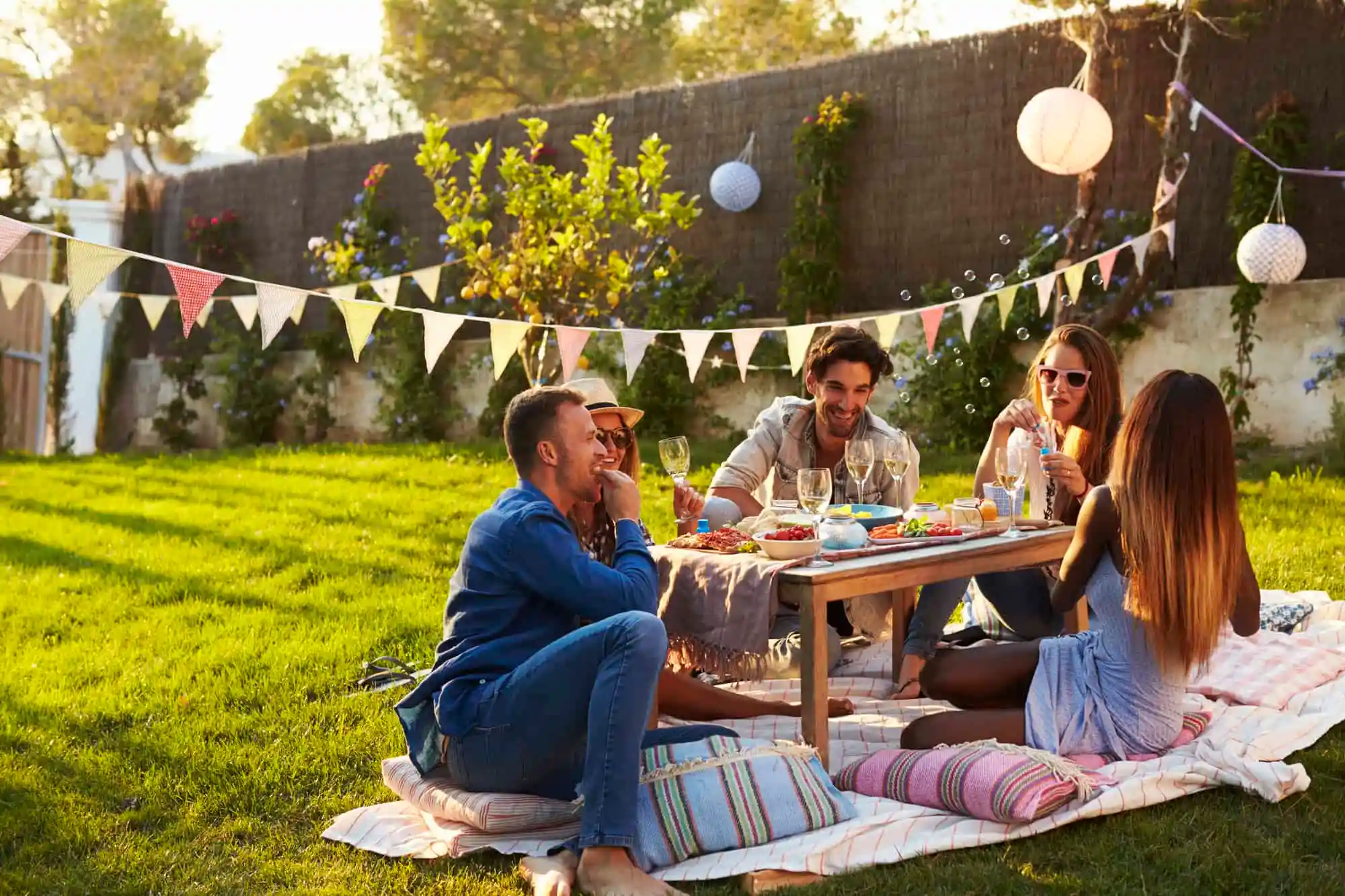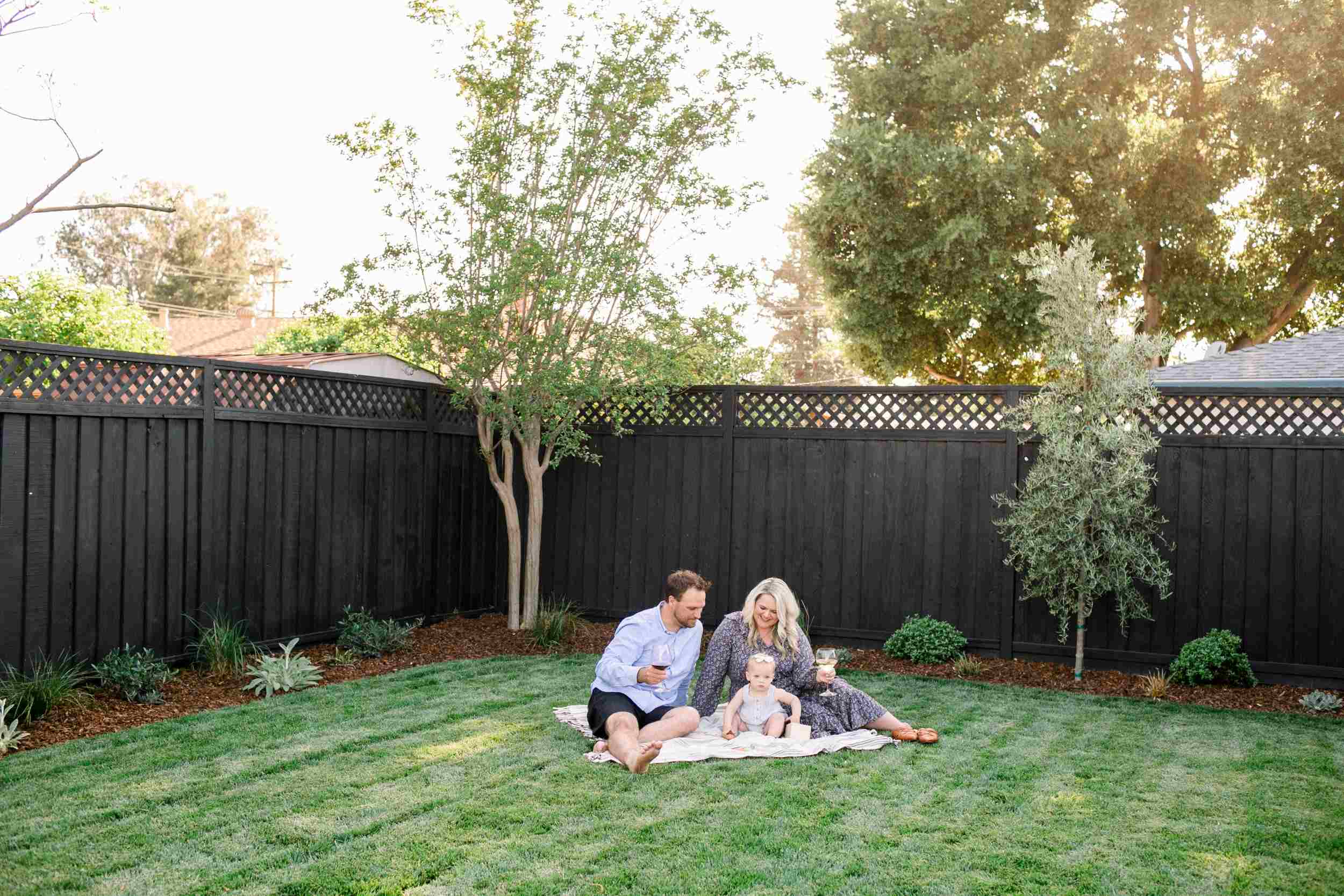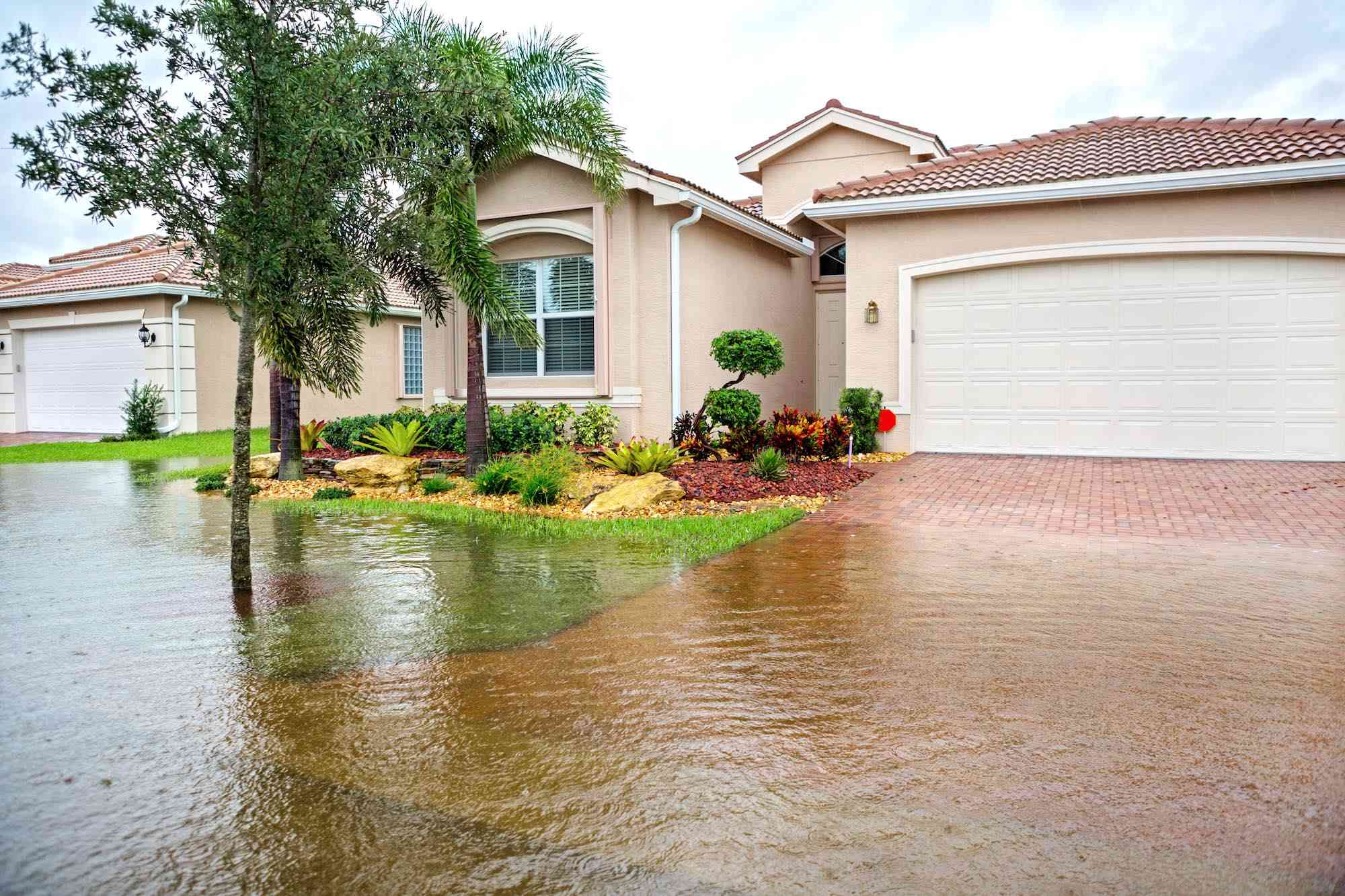Home>Garden Design>How To Create Privacy In Backyard
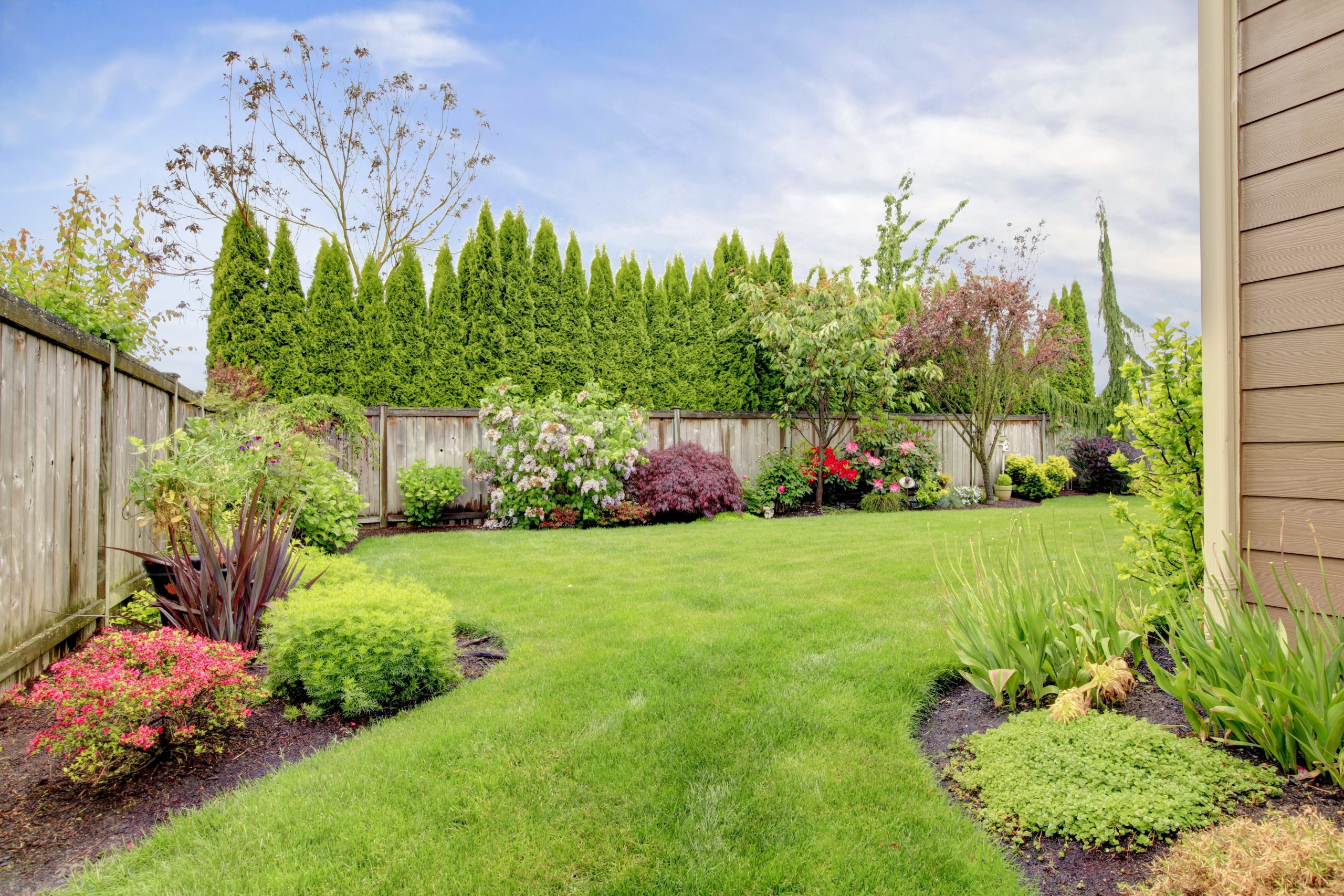

Garden Design
How To Create Privacy In Backyard
Modified: January 22, 2024
Create privacy in your backyard by planning your garden strategically. Learn effective tips and ideas to make your outdoor space more secluded and peaceful.
(Many of the links in this article redirect to a specific reviewed product. Your purchase of these products through affiliate links helps to generate commission for Chicagolandgardening.com, at no extra cost. Learn more)
Table of Contents
- Introduction
- Assessing Your Backyard
- Choosing the Right Privacy Features
- Installing Fencing Options
- Building a Privacy Wall
- Creating a Green Privacy Screen
- Installing Outdoor Curtains or Blinds
- Incorporating Plants and Trees for Privacy
- Adding Water Features for Privacy
- Utilizing Outdoor Privacy Screens
- Enhancing Privacy with Landscaping
- Conclusion
Introduction
Having a private and secluded backyard is a dream for many homeowners. Whether you want to enjoy a peaceful outdoor retreat, entertain guests, or simply have a space to relax and unwind, creating privacy in your backyard is essential. By strategically planning and implementing various privacy features, you can transform your backyard into a sanctuary that offers solitude and tranquility.
When it comes to designing a private backyard, there are several factors to consider. Assessing your backyard space, taking into account your specific needs and preferences, and choosing the right privacy features are key steps in achieving the desired level of seclusion.
In this article, we will explore different methods and techniques to create privacy in your backyard. We will discuss fencing options, building privacy walls, creating green privacy screens, installing outdoor curtains or blinds, incorporating plants and trees, adding water features, utilizing outdoor privacy screens, and enhancing privacy with landscaping. With a combination of these approaches, you can effectively enhance the privacy of your backyard while adding beauty and functionality to the space.
So, if you’re ready to transform your backyard into a private oasis, let’s dive into the world of privacy features and discover how you can create a serene and secluded outdoor space that suits your personal style and needs.
Assessing Your Backyard
Before you start adding privacy features to your backyard, it’s crucial to assess the layout and characteristics of your outdoor space. This will help you determine the level of privacy you need and the most effective ways to achieve it.
Begin by evaluating the surrounding environment. Take note of neighboring houses, buildings, or structures that may overlook your backyard. Consider the height and proximity of these potential privacy intrusions. This will help you identify the areas of your yard that require the most privacy enhancements.
Next, think about how you plan to use your backyard. Will you be entertaining guests, enjoying quiet relaxation, or engaging in outdoor activities? Understanding how you intend to utilize the space will help you determine the necessary level of privacy. For example, if you frequently entertain, you may want to create a more secluded area for hosting gatherings.
Additionally, consider the size and shape of your yard. Are there any natural barriers, such as trees or bushes, that can be utilized to enhance privacy? Take inventory of existing landscaping features and determine if they can be incorporated into your privacy plan.
Finally, take into account the aesthetic appeal of your backyard. Consider the overall style and theme of your outdoor space. This will guide your decision-making process when selecting privacy features that complement your existing design elements.
By assessing your backyard thoroughly, you will have a clear understanding of its strengths and weaknesses in terms of privacy. This will allow you to make informed decisions when choosing the right privacy features to incorporate into your outdoor space.
Choosing the Right Privacy Features
Once you have assessed your backyard and identified the areas that require privacy enhancements, it’s time to choose the right privacy features for your specific needs. There are various options available, so it’s important to consider functionality, aesthetics, and maintenance requirements before making your decision.
One of the most common and effective ways to create privacy in your backyard is through the installation of fencing. Fences come in a wide range of materials, styles, and heights, allowing you to tailor them to your specific privacy needs. Consider factors such as durability, maintenance, and visual appeal when choosing the right fencing option for your backyard.
If you’re looking for a more stylish and versatile option, consider building a privacy wall. Privacy walls can be constructed using various materials such as wood, brick, or stone and can be customized to match your backyard’s design aesthetic. They provide excellent privacy and can also double as a decorative feature.
For a natural and eco-friendly privacy solution, consider creating a green privacy screen. This involves planting tall shrubs, trees, or climbing plants along the perimeter of your backyard to create a natural barrier. Choose plants that are suitable for your climate and properly maintain them to ensure optimal privacy and visual appeal.
Installing outdoor curtains or blinds is another effective way to create privacy in your backyard. These can be installed on pergolas, gazebos, or between pillars to provide shade, privacy, and a touch of elegance. Choose weather-resistant materials and colors that complement your outdoor decor.
Another option is to incorporate plants and trees strategically. Planting tall hedges or trees in the areas that require privacy will not only provide shelter but also add beauty and shade to your backyard. Select plants that offer dense foliage and are resistant to pests and diseases for a low-maintenance privacy solution.
Water features can also serve a dual purpose as privacy-enhancing elements. Installing a fountain, pond, or waterfall can create a soothing ambiance while providing a visual and auditory barrier from neighboring properties. The sound of flowing water can help mask unwanted noise and create a serene atmosphere.
Outdoor privacy screens are a versatile option that can be easily installed and moved as needed. These screens can be made from materials such as wood, bamboo, or metal and can be used to create separate areas in your backyard or act as a barrier to block unwanted views.
Lastly, incorporating landscaping elements such as decorative stones, garden walls, or raised beds can provide an added layer of privacy to your backyard. These features can be combined with plants to create a visually appealing and private outdoor space.
Ultimately, choosing the right privacy features for your backyard will depend on your specific needs, design preferences, and maintenance requirements. Consider the pros and cons of each option and choose the features that best suit your outdoor space and lifestyle.
Installing Fencing Options
When it comes to creating privacy in your backyard, one of the most popular and effective options is installing fencing. Fences provide a physical barrier that can help block unwanted views and create a secluded space for you to enjoy.
Before choosing a fencing option, consider the purpose of your fence. Are you looking for complete privacy or do you want to maintain some level of visibility? Are you seeking a decorative element or purely functional privacy? These considerations will help you determine the style and material of your fence.
Wooden fences are a classic choice that offers both privacy and aesthetic appeal. They are available in a variety of styles, including solid panels, picket fences, and lattice designs. Choose a height that suits your privacy needs and ensure the wood is treated to withstand outdoor elements.
If you prefer a more modern and low-maintenance option, consider installing vinyl or composite fences. These materials are known for their durability and ability to withstand harsh weather conditions. They are also available in a range of styles and colors, allowing you to customize the look of your fence.
For those seeking a combination of privacy and security, metal fences such as wrought iron or aluminum can be an excellent choice. These fences are highly durable and can be designed with intricate patterns and decorative elements to add elegance to your backyard.
If you desire a more natural and rustic look, consider a living fence made of plants. A living fence can be created using tall shrubs, bushes, or bamboo arranged closely together to form a natural barrier. These fences not only provide privacy but also offer greenery and can help absorb noise.
Before installing a fence, check with your local municipality to ensure you comply with any regulations or permit requirements. It is important to accurately measure your backyard area to determine the amount of fencing material needed.
Once you have chosen your fencing option, hire a professional contractor or follow the manufacturer’s instructions to properly install the fence. Ensure it is securely anchored and that any gates or openings are functioning correctly. Regularly inspect and maintain the fence to keep it in good condition and maximize its lifespan.
Installing a fence can significantly enhance privacy in your backyard, creating a space where you can relax freely without interruptions from the outside world. Consider your privacy needs, style preferences, and maintenance requirements when selecting the right fencing option for your backyard.
Building a Privacy Wall
If you’re looking for a stylish and customizable option to create privacy in your backyard, consider building a privacy wall. Privacy walls not only provide seclusion but also act as a decorative element that can enhance the overall aesthetics of your outdoor space.
When building a privacy wall, the first step is to determine its location and dimensions. Consider the areas of your backyard that require the most privacy and select a suitable spot for the wall. Measure the length and height you desire, ensuring it aligns with your privacy needs.
Next, decide on the materials you want to use for your privacy wall. Common choices include wood, brick, stone, or even concrete blocks. Each material offers different levels of durability, maintenance requirements, and design options. Take into consideration the style and theme of your backyard when selecting the material.
Once you have selected the material, it’s time to start the construction process. Begin by marking the location of the wall using stakes and string to ensure a straight and precise layout. Dig the foundation trenches and pour concrete footings to provide stability and strength for the wall.
If you are building a wooden privacy wall, assemble the frame using pressure-treated lumber and secure it with appropriate fasteners. Add horizontal and vertical supports for added stability. Then attach the chosen material, such as wooden panels or boards, to the frame using screws or nails.
For masonry privacy walls, follow the specific instructions for each material. For example, if using bricks, lay them in a staggered pattern using mortar, making sure they are level and plumb. Alternatively, for stone or concrete blocks, build the wall layer by layer, using adhesive mortar to hold the blocks together.
While constructing the privacy wall, it’s essential to pay attention to detail. Ensure every element is properly aligned, level, and secure. Take the time to make any necessary adjustments or repairs during the construction process to ensure a sturdy and aesthetically pleasing finished product.
Once the privacy wall is built, you can consider adding decorative elements or finishes to enhance its appearance. Staining or painting a wooden wall can provide a custom look, while adding architectural details or trellises can add interest and functionality.
Remember to check local building codes and regulations before constructing a privacy wall, as some areas may have specific requirements regarding height, materials, or permits.
Building a privacy wall in your backyard provides a permanent and customizable solution for creating privacy. Take the time to plan, select materials, and construct the wall correctly, ensuring it meets your privacy needs and adds beauty to your outdoor oasis.
Creating a Green Privacy Screen
If you’re looking for a natural and eco-friendly way to create privacy in your backyard, consider creating a green privacy screen. This involves using plants, trees, or shrubs strategically placed to form a barrier and provide both privacy and beauty to your outdoor space.
The first step in creating a green privacy screen is to determine the area you want to enclose or shield from view. Consider the height and width of the space, as well as any specific sightlines you want to block.
Next, choose the right plants for your privacy screen. Look for tall, dense-growing species that will offer the desired level of privacy. Consider factors such as sunlight exposure, soil conditions, and your local climate when selecting plants that will thrive in your backyard.
Some popular options for privacy screens include evergreen trees such as arborvitae, cypress, or pine, which provide year-round coverage. Bamboo is another fast-growing choice that can create a dense and effective barrier. For a more decorative touch, consider flowering shrubs like hydrangeas or lilacs.
When planting your privacy screen, ensure there is enough space between each plant for them to grow and fill in the gaps. This will create a cohesive and uniform barrier. Properly prepare the soil, add fertilizer or compost if necessary, and water the plants regularly during the establishment phase.
Maintaining your green privacy screen is essential to ensure its health and longevity. Regularly prune and trim the plants to maintain their desired shape and height. Consider thinning out any overcrowded areas to allow for proper air circulation and sunlight penetration.
In addition to providing privacy, a green privacy screen offers other benefits to your backyard. It can help reduce noise pollution, act as a windbreak, and provide shade during hot summer months. The presence of plants and trees can also attract birds, bees, and other beneficial insects to your outdoor space.
If you’re looking for an instant green privacy screen, you may opt for pre-grown or potted plants. These are larger and more mature plants that can be arranged to create an immediate barrier. However, keep in mind that these options may be more expensive than starting from smaller plants and allowing them to grow over time.
Creating a green privacy screen not only adds seclusion to your backyard but also enhances its natural beauty. Take the time to plan and select the right plants for your specific needs and create a lush and thriving privacy screen that will bring joy and solitude to your outdoor oasis.
Installing Outdoor Curtains or Blinds
If you’re looking for a versatile and stylish way to create privacy in your backyard, consider installing outdoor curtains or blinds. These window treatments not only provide privacy but also offer shade, protection from the elements, and a touch of elegance to your outdoor space.
The first step in installing outdoor curtains or blinds is to determine the areas you want to cover and the type of coverage you desire. Consider which areas of your backyard need more privacy or shade, such as seating areas, pergolas, or gazebos.
Next, choose the right type of outdoor curtains or blinds for your specific needs. Outdoor curtains are typically made from weather-resistant fabric such as polyester or canvas, which can withstand exposure to sunlight and outdoor elements. Outdoor blinds, on the other hand, are often made from materials like bamboo or reed, providing a natural and rustic look.
Measure the dimensions of the areas you want to cover and select the appropriate size of curtains or blinds. Ensure that they are long enough to reach the desired height and wide enough to fully cover the area when closed.
Installation methods may vary depending on the type of curtains or blinds you choose. For curtains, you can use curtain rods or tension rods to hang them. If you’re installing blinds, they may come with built-in hooks or loops for easy installation. Follow the manufacturer’s instructions to properly mount and secure the curtains or blinds.
In addition to providing privacy, outdoor curtains or blinds can also help control sunlight and temperature in your backyard. You can easily adjust the curtains or blinds to allow for more or less light and air circulation, depending on the weather and your preferences.
Consider the color and design of the outdoor curtains or blinds to ensure they complement your outdoor decor and style. Choose colors or patterns that add visual interest and coordinate with the overall theme of your backyard.
Maintenance of outdoor curtains or blinds is important to ensure their longevity. Regularly clean them by removing any debris or dirt that may accumulate. If using fabric curtains, follow the care instructions for washing and drying to keep them looking fresh.
Installing outdoor curtains or blinds is an effective and visually appealing way to create privacy in your backyard. They provide shade, protection, and a sense of intimacy, allowing you to enjoy your outdoor space with comfort and seclusion.
Incorporating Plants and Trees for Privacy
If you’re seeking a natural and aesthetically pleasing way to create privacy in your backyard, incorporating plants and trees is an excellent option. Not only do they offer seclusion, but they also enhance the beauty of your outdoor space and provide additional benefits such as shade and wildlife habitat.
The first step in incorporating plants and trees for privacy is to choose the right species that will thrive in your climate and meet the desired height and density requirements. Look for fast-growing trees or shrubs that offer dense foliage and can provide the desired level of seclusion.
Consider the layout of your backyard and the areas that require privacy. Place taller plants and trees near the boundaries or areas where neighbors or passersby can see into your yard. This will create a natural barrier that blocks unwanted views and adds privacy to your outdoor space.
When planting, ensure that you allow enough space between each plant to accommodate their mature size. This will prevent overcrowding and allow for proper airflow and sunlight penetration. Proper spacing also ensures that each plant has enough room to grow and develop a healthy root system.
Regular maintenance is crucial to ensure the health and appearance of your plant privacy screen. Prune and trim the plants as needed to maintain their desired shape and height. Remove any dead or diseased branches and thin out any overcrowded areas.
Consider adding a variety of plant species to your privacy screen to create visual interest and diversity. Mixing different colors, textures, and heights can result in a more visually appealing and dynamic landscape. Additionally, planting flowering shrubs or trees can add beauty and attract pollinators to your backyard.
While plants and trees offer natural privacy, it’s important to be mindful of their potential drawbacks. Some trees or plants may shed leaves or debris that require regular cleaning. Consider the maintenance requirements and potential impact on neighboring properties when selecting plants for your privacy screen.
Furthermore, when selecting trees, consider their root systems and potential effects on underground utilities and nearby structures. Research the potential height and spread of the trees to ensure they will not interfere with power lines or buildings as they grow.
Incorporating plants and trees for privacy in your backyard offers a long-lasting and eco-friendly solution. Not only do they provide seclusion, but they also contribute to the overall beauty and environmental health of your outdoor space. Take the time to choose the right species, properly maintain them, and enjoy the natural privacy and tranquility of your garden.
Adding Water Features for Privacy
Water features can be a unique and captivating way to create privacy in your backyard while adding a sense of tranquility and relaxation. Incorporating a water feature not only offers seclusion but also provides a soothing ambiance that can mask unwanted noise and create a serene atmosphere.
When considering adding a water feature for privacy, think about the available space in your backyard and the specific areas that require seclusion. Water features can be installed near seating areas, patios, or outdoor dining spaces to create a sense of intimacy and privacy.
There are various types of water features to choose from, ranging from small fountains to larger ponds or waterfalls. Consider the overall size and scale of your backyard, as well as your personal preferences, to select the right water feature.
A small tabletop or wall-mounted fountain can be an ideal choice if space is limited. These compact water features offer a visual and auditory barrier that helps maintain privacy. They can be installed on a patio or positioned strategically to create a focal point and provide a sense of seclusion.
For those with more space, a pond or waterfall can be a stunning addition to the backyard. These larger water features not only offer privacy but also attract wildlife and add a natural and serene element to your outdoor oasis. Consider incorporating plants and rocks around the water feature for a more organic and integrated look.
When installing a water feature, it’s essential to consider the maintenance requirements. Ponds and larger water features may require regular cleaning and care to keep them functioning properly and looking their best. Ensure any electrical components are installed safely and follow proper maintenance procedures to keep the water feature in optimal condition.
Additionally, consider the positioning of the water feature in relation to the surrounding area. Placing the water feature near trees or shrubs can add an extra layer of privacy and create a peaceful and secluded ambiance.
Consider the sound and movement of the water feature in relation to the privacy it provides. Features with trickling or cascading water can help mask outside noises and create a peaceful environment. Additionally, the movement of the water can help visually block views and add a sense of privacy.
Lighting can also enhance the beauty and privacy of your water feature. Install outdoor lights around the water feature to create an enchanting ambiance in the evening hours. This not only adds visual appeal but also ensures that the water feature remains a focal point even after dusk.
Adding a water feature to your backyard can offer a unique and tranquil way to create privacy. By carefully selecting the type, placement, and maintenance of the water feature, you can enjoy a private and serene outdoor space where you can relax and escape the outside world.
Utilizing Outdoor Privacy Screens
Outdoor privacy screens are a versatile and practical solution for creating privacy in your backyard. These screens can be used in various ways to block unwanted views, define separate areas, and enhance the seclusion of your outdoor space.
Outdoor privacy screens come in a range of materials, styles, and sizes, allowing you to choose the option that best suits your needs and complements your backyard’s aesthetic. Common materials for outdoor privacy screens include wood, bamboo, metal, and composite materials.
One of the simplest ways to utilize outdoor privacy screens is by placing them strategically to block off certain areas of your backyard. This can create a secluded space for relaxation, dining, or entertaining guests. Positioning screens near seating areas or outdoor kitchens can enhance privacy and provide a sense of intimacy.
Outdoor privacy screens can also be used as partitions to separate different functional areas in your backyard. For example, they can separate a dining space from a play area or define the boundaries of a meditation garden. This helps create distinct zones and provides privacy for each specific area.
In addition to providing privacy, outdoor privacy screens can also add a decorative element to your outdoor space. Choose screens with intricate designs or patterns that complement the overall style of your backyard. They can act as a stylish backdrop or an artistic focal point.
Another practical use for outdoor privacy screens is to shield certain elements of your backyard, such as air conditioning units, garbage bins, or storage areas, from view. By strategically placing screens around these elements, you can effectively hide them and maintain a clean and uncluttered appearance in your yard.
It’s important to consider the height and width of the screens when using them for privacy purposes. Measure the area you want to cover and choose screens that are tall enough to block the desired line of sight. Ensure that the screens are wide enough to provide adequate coverage.
Proper installation of outdoor privacy screens is crucial for their functionality and durability. Follow the manufacturer’s instructions and securely anchor the screens to posts, walls, or fences. Regularly inspect and maintain the screens to keep them in good condition and prolong their lifespan.
Outdoor privacy screens offer an effective and versatile solution for creating privacy in your backyard. By utilizing them strategically, you can block unwanted views, enhance the seclusion of specific areas, and add visual interest to your outdoor space. Consider your specific privacy needs and design preferences when choosing and incorporating outdoor privacy screens into your backyard.
Enhancing Privacy with Landscaping
Landscaping is an excellent tool for enhancing privacy in your backyard while adding beauty and natural elements to your outdoor space. By incorporating specific landscaping techniques and features, you can create a private oasis that suits your needs and preferences.
One effective way to enhance privacy with landscaping is by creating a living wall or hedge. This involves planting tall and dense shrubs or bushes along the perimeter of your backyard to form a natural barrier. Choose plants that are suitable for your climate, grow quickly, and require minimal maintenance.
When selecting plants for a living wall, consider their height, density, and foliage type. Evergreen plants are a popular choice as they provide year-round coverage and privacy. Additionally, plants with thick leaves or dense foliage can offer a more effective barrier against unwanted views.
Another landscaping technique to enhance privacy is the use of layered planting. By incorporating plants of different heights and sizes, you can create a visually appealing and multi-dimensional outdoor space that adds depth and seclusion.
Consider incorporating tall trees or bamboo for height, mid-sized shrubs for intermediate privacy, and lower-growing plants or groundcovers for a layered effect. This combination not only offers privacy but also adds texture, color, and variety to your backyard.
Incorporating decorative elements such as trellises, pergolas, or lattice panels can also enhance privacy in your backyard. These structures can be adorned with climbing plants or vines that provide additional coverage and act as a decorative feature.
When selecting climbing plants, consider those that are fast-growing, provide dense coverage, and are suited to your climate. Popular choices include climbing roses, ivy, clematis, and jasmine. These plants can be trained to grow and cover the structures, creating a visually pleasing and private outdoor space.
Strategic placement of outdoor furniture, such as seating or dining areas, can also help enhance privacy in your backyard. Positioning furniture near existing landscaping features or within the layout of your backyard can create secluded spots for relaxation or entertaining.
Incorporating water features, such as fountains or waterfalls, can further enhance privacy and the overall ambiance of your backyard. The sound of flowing water can help mask unwanted noise and create a serene and tranquil environment.
Lighting is another essential element for enhancing privacy in your backyard. Install outdoor lighting that highlights specific areas while providing privacy. This can include path lights, uplights for plants or trees, or string lights that create a cozy and intimate atmosphere.
Lastly, maintaining your landscaping is crucial for long-term privacy. Regularly prune, trim, and shape your plants to ensure they remain dense and provide the desired coverage. Remove any dead or overgrown branches to maintain their health and appearance.
Enhancing privacy with landscaping requires careful planning, proper plant selection, and regular maintenance. By utilizing different landscaping techniques, you can create a private and peaceful outdoor sanctuary that reflects your style and provides an escape from the outside world.
Conclusion
Creating privacy in your backyard is essential for enjoying a peaceful and secluded outdoor space. By assessing your backyard, choosing the right privacy features, and strategically implementing them, you can transform your backyard into a private oasis that suits your needs and preferences.
Assessing your backyard is the first step in determining the areas that require privacy enhancements. Consider factors such as neighboring structures, desired usage of the space, and existing landscaping features to better understand the level of privacy needed.
Choosing the right privacy features is crucial in achieving the desired level of seclusion. Options such as installing fencing, building privacy walls, creating green privacy screens, and incorporating outdoor curtains or blinds offer versatile and aesthetically pleasing solutions.
In addition to the above options, incorporating plants and trees can add natural beauty and enhance privacy in your backyard. Utilizing outdoor privacy screens and adding water features can also provide unique and captivating ways to create seclusion and tranquility.
Enhancing privacy with landscaping techniques, such as creating living walls or hedges, using layered planting, and incorporating decorative elements, adds both functionality and visual appeal to your outdoor space.
Throughout the process, it is important to consider maintenance requirements, local regulations and permits, as well as the overall aesthetics and functionality of your backyard.
By combining different privacy features and techniques, you can create a backyard that offers the seclusion and tranquility you desire. Whether you’re looking to relax, entertain guests, or simply enjoy nature, a private backyard provides the ideal space to do so.
Remember, privacy in your backyard is not just about blocking views but also creating a sense of peace and solitude. It’s about designing an outdoor space that allows you to escape from the outside world and find tranquility right in your own backyard.
So take the time to plan, implement, and maintain the privacy features that best suit your needs. With a little creativity and careful consideration, you can create a backyard that provides the perfect balance of privacy and beauty, allowing you to make the most of your outdoor space.
